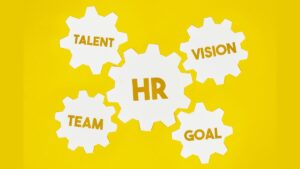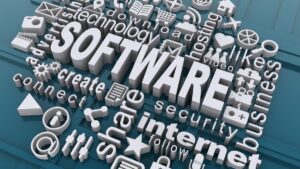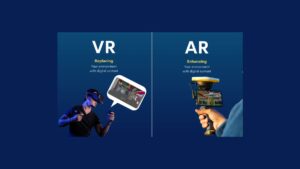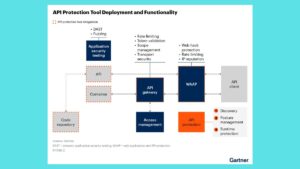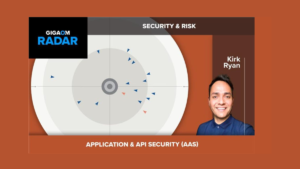What Is HR Technology? A Comprehensive Guide to Modern Workforce Solutions

In today’s fast-paced business environment, companies are increasingly turning to technology to streamline processes, enhance productivity, and improve overall efficiency. One area that has seen significant transformation through technological advancement is Human Resources (HR). HR technology, often referred to as HR Tech, encompasses a wide range of software, tools, and platforms designed to automate and optimize HR functions, from hiring and onboarding to performance management and employee engagement.
This blog will delve into what HR technology is, its core components, the benefits it offers, and how it is reshaping the way companies manage their most valuable asset: their people.
What Is HR Technology?
HR technology refers to the suite of digital tools and software applications used by organizations to manage, automate, and enhance their human resources functions. It covers everything from basic administrative tasks to complex decision-making processes. HR Tech includes a wide range of solutions such as Human Resource Information Systems (HRIS), Human Capital Management (HCM) systems, payroll software, recruitment platforms, learning management systems, and more.
These technologies are designed to help HR departments streamline their operations, reduce manual workload, improve data accuracy, and provide insights that drive strategic decision-making. By leveraging HR technology, businesses can create more efficient processes, foster a better employee experience, and align their workforce strategies with overall business goals.
Key Components of HR Technology
HR technology encompasses various tools and systems, each catering to specific HR functions. Here are some of the key components:
1. Human Resource Information System (HRIS)
An HRIS is a centralized database that stores employee information and automates various HR processes. It typically includes modules for personnel tracking, payroll, benefits administration, and compliance management. HRIS systems serve as the backbone of HR operations, providing a single source of truth for employee data and simplifying administrative tasks.
2. Applicant Tracking System (ATS)
An ATS is a tool used to manage the recruitment process. It helps HR teams post job openings, track applications, screen resumes, and manage the hiring workflow. An ATS can streamline the recruitment process, making it easier to identify and engage with top talent while reducing time-to-hire.
3. Performance Management Systems
Performance management systems are used to set goals, track employee performance, and provide feedback. These platforms facilitate regular performance reviews, 360-degree feedback, and performance analytics, helping managers identify high performers, address performance issues, and align employee objectives with company goals.
4. Learning Management Systems (LMS)
An LMS is a platform used to deliver, track, and manage employee training and development programs. It provides access to online courses, training materials, and assessments, enabling organizations to foster continuous learning and skill development. An LMS helps companies keep their workforce up-to-date with the latest skills and knowledge, driving employee engagement and career growth.
5. Payroll and Benefits Administration
Payroll and benefits software automate the calculation and distribution of employee wages, deductions, and benefits. These tools ensure accurate and timely payroll processing, compliance with tax regulations, and efficient benefits management. By automating payroll, businesses can reduce errors, save time, and improve employee satisfaction.
6. Employee Engagement and Communication Tools
Employee engagement platforms are designed to measure and enhance employee engagement, satisfaction, and retention. These tools often include features like pulse surveys, recognition programs, communication channels, and feedback mechanisms. By fostering a positive work environment and promoting open communication, these tools help build a more engaged and motivated workforce.
7. Workforce Analytics and Reporting
Workforce analytics tools provide data-driven insights into various aspects of HR, such as recruitment, performance, turnover, and employee engagement. These tools enable HR leaders to make informed decisions, identify trends, and develop strategies that improve workforce productivity and alignment with business objectives.
Benefits of HR Technology
HR technology offers numerous benefits that can significantly impact an organization’s efficiency, productivity, and employee experience. Here are some of the key advantages:
1. Streamlining HR Processes
One of the primary benefits of HR technology is the automation of routine tasks, such as payroll processing, benefits administration, and employee data management. By reducing the manual workload, HR teams can focus on more strategic activities, such as talent development, employee engagement, and organizational planning.
2. Enhancing Data Accuracy and Compliance
HR Tech solutions help ensure that employee data is accurate, up-to-date, and securely stored. This reduces the risk of errors and helps organizations maintain compliance with labor laws and regulations. Automated systems can also provide alerts and reminders for compliance-related activities, such as filing deadlines or mandatory training.
3. Improving Recruitment and Onboarding
With the use of ATS and other recruitment tools, HR departments can streamline the hiring process, from job postings to candidate selection. These systems help identify the best candidates quickly, reduce time-to-hire, and improve the overall candidate experience. Additionally, onboarding platforms can automate the onboarding process, providing new hires with a seamless transition into the company.
4. Supporting Employee Development and Retention
Learning management systems and performance management tools enable companies to provide ongoing training and development opportunities. By investing in employee growth, organizations can improve job satisfaction, boost engagement, and reduce turnover rates. Performance management systems also provide clear paths for career advancement, helping employees see a future within the company.
5. Enabling Data-Driven Decision Making
HR technology provides access to valuable data and analytics that can inform strategic decision-making. By analyzing metrics such as employee turnover, engagement levels, and performance trends, HR leaders can identify areas for improvement and implement targeted initiatives to address challenges. This data-driven approach allows companies to proactively manage their workforce and align HR strategies with business goals.
6. Enhancing Employee Experience
Modern HR technology solutions are designed with the user experience in mind, offering intuitive interfaces and self-service options that empower employees. From accessing pay stubs and updating personal information to requesting time off and enrolling in benefits, these tools make it easy for employees to manage their own HR-related tasks, improving their overall experience.
The Future of HR Technology
As technology continues to evolve, the HR Tech landscape is expected to see even more advancements. Artificial Intelligence (AI), Machine Learning (ML), and predictive analytics are becoming increasingly integrated into HR systems, offering more sophisticated tools for talent acquisition, performance management, and employee engagement.
AI-powered chatbots, for example, can handle routine HR inquiries, freeing up time for HR professionals to focus on more complex issues. Predictive analytics can help companies forecast workforce needs, identify potential turnover risks, and develop proactive retention strategies.
Moreover, the rise of remote and hybrid work models has accelerated the adoption of digital HR tools that support collaboration, communication, and employee well-being, regardless of location. The focus is shifting towards creating a more connected, agile, and responsive HR function that can adapt to the changing needs of the modern workforce.
Conclusion
HR technology is revolutionizing the way businesses manage their workforce, providing the tools needed to enhance efficiency, accuracy, and employee satisfaction. By leveraging HR Tech solutions, companies can streamline their HR processes, make data-driven decisions, and create a more engaging and supportive work environment.
As the HR Tech landscape continues to evolve, organizations that embrace these technologies will be better positioned to attract and retain top talent, drive business success, and navigate the complexities of the modern workplace. Whether you’re a small business looking to automate basic HR functions or a large enterprise seeking advanced analytics and AI capabilities, HR technology offers a path to a more efficient and effective HR strategy.

